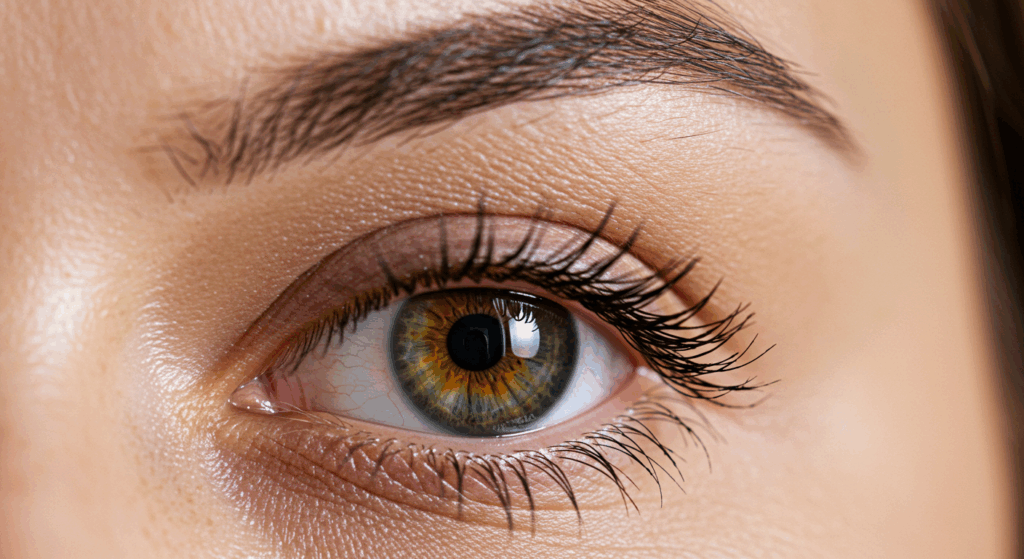For transgender women (MTF) undergoing facial feminization surgery (FFS), subtle yet impactful changes around the eyes can significantly contribute to a more feminine appearance. While procedures like blepharoplasty (eyelid surgery) and brow lift address the soft tissues, the underlying bony structure of the orbits (eye sockets) also plays a crucial role in defining the shape and perceived gender of the eyes. Lateral orbital rim contouring is a specialized surgical technique that focuses on reshaping the outer edges of the eye sockets to create a more feminine and often rounder or almond-shaped eye. This comprehensive guide, written from a surgeon’s perspective, delves into the anatomical considerations, surgical methods, and expected outcomes of lateral orbital rim contouring in MTF facial feminization.

Table of Contents
Understanding the Lateral Orbital Rim and its Influence on Eye Shape
The orbit is the bony cavity in the skull that houses the eyeball and its associated structures. The orbital rim is the bony edge surrounding this cavity. The lateral orbital rim specifically refers to the outer bony edge of the eye socket, formed by the zygomatic bone and the frontal bone. Its shape and projection contribute to the overall contour of the periorbital (around the eyes) region and influence the perceived shape of the eye itself.
Anatomical Differences in Male and Female Lateral Orbital Rims
- Projection and Definition: Male lateral orbital rims tend to be more prominent and sharply defined. They often exhibit a more angular or squared-off appearance.
- Smoothness and Curvature: Feminine lateral orbital rims are typically smoother and exhibit a more gentle, often slightly curved contour. The transition from the upper to the lateral rim is usually less angular.
- Width: While less of a primary focus, the overall width of the lateral orbital rim can contribute to the perceived width of the upper face around the eyes.
How the Lateral Orbital Rim Affects Eye Shape Perception
The shape of the lateral orbital rim influences how the soft tissues around the eye drape and contour. A more prominent and angular lateral rim can contribute to a more hooded or less open appearance of the outer eye. Conversely, a smoother and less projecting rim can create a more open, rounder, or almond-shaped eye, often considered more feminine.
Limited Impact of HRT on Bony Orbital Structures
Similar to other bony structures of the face, hormone replacement therapy (HRT) has minimal effect on the shape and projection of the lateral orbital rims in adults. Surgical intervention is typically required to achieve a noticeable and lasting change in this area.

Surgical Techniques for Lateral Orbital Rim Contouring
Lateral orbital rim contouring is typically performed as part of a more comprehensive facial feminization surgery, often in conjunction with foreheadplasty and other orbital rim procedures. The primary technique involves direct bony modification.
Lateral Orbital Rim Ostectomy and Osteoplasty
- Technical Explanation: The primary surgical technique for lateral orbital rim contouring involves a combination of ostectomy (surgical removal of bone) and osteoplasty (surgical reshaping of bone). This is typically performed through the same coronal incision used for foreheadplasty, providing adequate access to the upper and lateral orbital rims.
- Exposure: The scalp and soft tissues are elevated to expose the frontal bone, supraorbital rims (upper), and lateral orbital rims (formed by the zygomatic and frontal bones).
- Ostectomy: Using specialized surgical burs and osteotomes (chisels), small amounts of bone are carefully removed from the lateral orbital rim. The focus is on reducing the projection and softening any sharp angles or squared-off edges. The amount of bone removed is meticulously planned based on the individual’s anatomy and desired outcome.
- Osteoplasty: After bone removal, the remaining bony edges are smoothed and contoured using surgical burs to create a more gentle and curved transition. This helps to eliminate any residual angularity and create a more feminine contour.
- Colloquial Explanation: Imagine carefully and gently shaving down the sharp or protruding outer edges of the bone around your eyes with a specialized surgical tool, making them smoother and more rounded. The surgeon essentially sculpts the bone to create a softer, more feminine curve.
- Ideal Candidates: Individuals with prominent and angular lateral orbital rims that contribute to a less feminine eye shape. This is often considered in conjunction with other forehead and orbital contouring procedures.
- Considerations: The surgeon must exercise extreme caution to avoid injury to the surrounding soft tissues, including the temporalis muscle and the periorbital fat. The amount of bone that can be safely removed is limited by the need to maintain structural integrity and protect the underlying tissues.
Adjunctive Procedures to Enhance Feminine Eye Shape
While lateral orbital rim contouring directly addresses the bony structure, other FFS procedures can complement its effects in achieving a more feminine eye shape:
- Brow Lift (Forehead Lift): Elevating the eyebrows to a higher, more arched position can open up the eyes and create a more feminine appearance, complementing the smoother contour of the lateral orbital rim.
- Upper Blepharoplasty (Eyelid Lift): Removing excess skin and fat from the upper eyelids can make the eyes appear more open and less hooded, enhancing the effect of lateral orbital rim contouring.
- Canthoplasty/Canthopexy: These procedures address the outer corner (canthus) of the eye. Canthopexy involves tightening the tendon supporting the lower eyelid, while canthoplasty involves surgically repositioning the canthus to create a more almond or upturned shape, which is often considered feminine. While not directly related to the bony rim, these procedures significantly impact the overall shape of the eye opening.
- Fat Grafting to the Periorbital Region: Injecting small amounts of fat into the upper eyelids or the area around the lateral orbital rim can soften contours and create a more youthful and feminine appearance.
The Surgical Process: Planning and Execution of Lateral Orbital Rim Contouring
Lateral orbital rim contouring is a delicate procedure that requires meticulous planning and precise surgical execution.
Pre-Surgical Planning and Imaging
- Comprehensive Facial Analysis: The surgeon will assess the patient’s overall facial structure, paying close attention to the shape and projection of the orbital rims and their relationship to the forehead and midface.
- High-Resolution 3D Computed Tomography (CT) Scans: These scans provide detailed images of the underlying bony anatomy of the orbits, allowing the surgeon to precisely plan the amount and location of bone removal.
- Surgical Simulation: In some cases, surgeons may use 3D modeling software to simulate the planned bone contouring and visualize the potential outcome.
- Anthropometric Measurements: Precise measurements of the orbital dimensions help guide the surgical plan towards achieving feminine proportions.
The Surgical Procedure
Lateral orbital rim contouring is typically performed under general anesthesia, often as part of a larger FFS procedure.
- Incision: The most common incision is a coronal incision, made across the scalp behind the hairline. This provides excellent access to the frontal bone, supraorbital rims, and lateral orbital rims. In some limited cases, small, direct incisions near the lateral orbital rim may be considered, but these can result in more visible scarring.
- Exposure of the Lateral Orbital Rim: The scalp and soft tissues are carefully elevated to expose the lateral aspect of the orbital rim, formed by the junction of the zygomatic and frontal bones.
- Bone Reshaping: Using specialized surgical burs and small osteotomes, the surgeon carefully removes small amounts of bone to reduce the lateral projection and soften any sharp angles. The bone is then smoothed and contoured to create a more gentle curve. Extreme care is taken to avoid injury to the surrounding soft tissues, including the temporalis muscle and the periorbital fat pads.
- Closure: The scalp incision is closed in layers with sutures or surgical staples. If direct incisions were used near the lateral orbital rim, these are closed with fine sutures.
Post-Operative Recovery
Recovery after lateral orbital rim contouring is similar to that of other bony FFS procedures, with swelling and bruising being the primary immediate effects.
- Immediate Post-Op: Expect swelling and bruising around the eyes and forehead. Pain medication will be prescribed. A compression dressing may be applied to the head. Cold compresses are essential to minimize swelling.
- First Few Weeks: Swelling and bruising will gradually subside. Sutures or staples from the coronal incision are typically removed within 7-14 days. Direct incisions near the lateral orbital rim will also have their sutures removed within this timeframe. Avoid strenuous activity and heavy lifting. Keep the head elevated.
- Mid-Term Recovery (Weeks to Months): Residual swelling may persist for several months. The final contour of the lateral orbital rim and the resulting eye shape will become more apparent as the swelling resolves. Numbness or tingling in the scalp is common and usually improves gradually.
- Long-Term Recovery (Months to a Year): The tissues will continue to settle, and any scars will mature and fade over time.
Potential Risks and Complications of Lateral Orbital Rim Contouring
While lateral orbital rim contouring is generally a safe procedure when performed by an experienced surgeon, potential risks and complications include:
- Infection: Although rare with proper surgical technique and post-operative care.
- Bleeding and Hematoma: Collection of blood under the skin requiring drainage.
- Nerve Damage: Potential for temporary or permanent numbness or weakness in the forehead or temple area due to manipulation of sensory nerves during the procedure.
- Asymmetry: Despite meticulous planning, subtle asymmetries in the orbital rims can occur.
- Temporal Hollowing: Excessive bone removal in the lateral orbital rim region could potentially contribute to a hollowing appearance in the temples. This is usually avoided with careful surgical planning.
- Unsatisfactory Aesthetic Outcome: The final eye shape may not fully meet the patient’s expectations, potentially requiring revision surgery.
- Injury to Surrounding Soft Tissues: Careful surgical technique is essential to avoid damage to the temporalis muscle, periorbital fat, and other delicate structures around the eye.
Choosing a board-certified facial feminization surgeon with specific experience in bony contouring of the orbits is crucial to minimize these risks and achieve optimal results.

The Role of Lateral Orbital Rim Contouring in Comprehensive Facial Feminization
Lateral orbital rim contouring, while often a subtle aspect of FFS, can contribute significantly to the overall feminization of the upper face and the perceived shape of the eyes. When combined with other procedures targeting the forehead, brows, and eyelids, it helps to create a more harmonious and feminine periorbital region. The goal is to create a smoother, less angular transition from the forehead to the midface, resulting in a softer and often rounder or almond-shaped eye, which are frequently associated with feminine aesthetics.
Conclusion: Refining the Feminine Eye Shape Through Bony Contouring
Lateral orbital rim contouring is a specialized surgical technique within the broader field of facial feminization that focuses on reshaping the outer edges of the eye sockets to achieve a more feminine eye shape. By carefully reducing bony prominence and softening sharp angles, surgeons can create a more open, rounder, or almond-shaped eye, contributing significantly to the overall feminization of the face. Understanding the anatomical considerations, surgical methods, and potential risks and benefits is crucial for MTF individuals considering this procedure.
Choosing a skilled and experienced facial feminization surgeon who is proficient in bony orbital contouring is paramount for a safe and successful journey towards a more authentic and affirmed facial identity. This targeted approach to refining the bony framework around the eyes represents a vital step in achieving a comprehensive and harmonious feminine facial appearance.
Visit Dr.MFO Instagram profile to see real patient transformations! Get a glimpse of the incredible results achieved through facial feminization surgery and other procedures. The profile showcases before-and-after photos that highlight Dr. MFO’s expertise and artistic vision in creating natural-looking, beautiful outcomes.
Ready to take the next step in your journey? Schedule a free consultation with Dr. MFO ( Best Facial Feminization Surgeon for You) today. During the consultation, you can discuss your goals, ask any questions you may have, and learn more about how Dr. MFO can help you achieve your desired look. Don’t hesitate to take advantage of this free opportunity to explore your options and see if Dr. MFO is the right fit for you.









